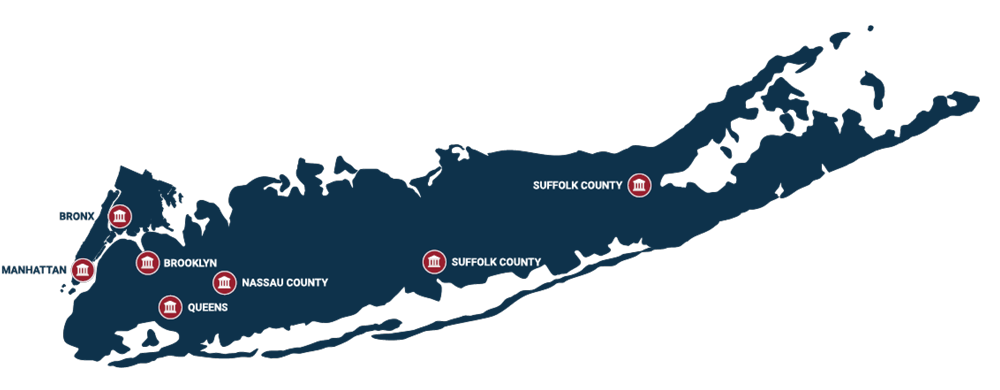With the New Year well underway, one resolution a litigator may have is to increase her active case load. But as we warn our children to “be careful what you wish for…”, a wise attorney knows that the maxim has a place in private practice, not just grammar school. What if your wish came true and tomorrow your best client calls to tell you that he has been served with a new complaint, and that there are more coming, 6 more, to be exact? Not only has the client been sued in seven related matters, but the matters are pending in four different counties: Suffolk; Kings; Erie; and Albany.
A week later, when your pulse returns to normal and you have been provided with a copy of the seven complaints, the anxiety begins to creep up again when you realize that despite the fact that you are thrilled to have the work, as a practical matter, defending seven related matters, in different counties, is a logistical nightmare. You do not want your client to be deposed on 7 occasions, nor do you want to respond to 7 Preliminary Conference Orders. If we assume that the plaintiffs will not consent to consolidation, and that the same may not be feasible pursuant to CPLR 602, how do you begin to get a handle on the matters before the 7 matters get a handle on you? Be careful what you wish for ….
The Unified Court System’s Litigation Coordinating Panel (“LCP”) may be the resource you need to regain control. Pursuant to 202.69 of the Uniform Civil Rules of the Supreme Court, this section applies when related actions are pending in more than one judicial district and it may be appropriate for the actions to be coordinated. The LCP is composed of one Justice from each Department in the State, and maintains its office at 60 Centre Street, room 148, in Manhattan.
The standard for coordination is a broad one, and the Panel will consider:
the complexity of the actions; whether common questions of fact or law exist, and the importance of such questions to the determination of the issues; the risk that coordination may unreasonably delay the progress, increase the expense, or complicate the processing of any action or otherwise prejudice a party; the risk of duplicative or inconsistent rulings, orders or judgments; the convenience of the parties, witnesses and counsel; whether coordinated discovery would be advantageous; efficient utilization of judicial resources and the facilities and personnel of the court; the manageability of a coordinated litigation; whether issues of insurance, limits on assets and potential bankruptcy can be best addressed in coordinated proceedings; and the pendency of related matters in the federal courts and in the courts of other states. The Panel may exclude particular actions from an otherwise applicable order of coordination when necessary to protect the rights of parties.
Procedures Before the LCP
In order to trigger the LCP, an application may be made to the Panel for the issuance of an order of coordination. The Justice before whom a related action is pending or an Administrative Justice in whose district such an action is pending may raise the issue of coordination with the LCP; the LCP itself may raise the issue sua sponte by order requiring all parties to show cause why coordination should not be directed. In addition to Judicial-initiation of LCP review, a party may trigger LCP review by applying for coordination by notice of motion or, if exigent circumstances exist, by Order to Show Cause returnable before the LCP. Upon receipt of such an application, the LCP will issue a briefing schedule.
While the application before the LCP is pending, the LCP (or a single Justice thereof on the LCP’s behalf) may issue a stay of all proceedings in any or all of the actions for which coordination is sought. Absent such a stay by the LCP, proceedings before the Panel does not affect the proceedings in the actions which are subject to the application.
Within 30 days from submission of reply or from oral argument, the LCP will issue a written decision granting or denying the application. In the event that the application is granted, an order of coordination is likewise issued, which identifies all matters which shall be coordinated, the number of coordinating justices and the county or counties wherein coordination proceedings shall take place. Thereafter, the LCP will provide a mechanism for the transfer of all to-be-coordinated matters. Since this is simply an administrative procedural issue, no appeal lies from the LCP ruling on the application.
Pursuant to subdivision F of the Procedures section, there are provisions governing subsequently filed actions as well as pending actions which were not included in the LCP’s Order. Finally, the Coordinating Justice, sua sponte, or upon motion of any party, may terminate coordination, in whole or in part, upon a determination that coordination has been completed or that the purposes of the coordination section can best be achieved by termination of the coordination. Interestingly, upon termination, the actions are remanded to their respective counties of origin for trial unless the parties to an action consent to trial of that action before the Coordinating Justice.
